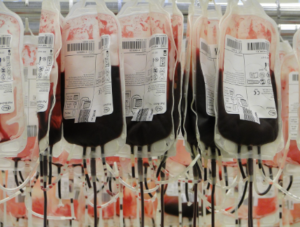Enterprise Architecture strategy study for a Blood and Transplant Supply Chain
The Situation
In early 2015, NHS Blood and Transplant (NHSBT) faced significant challenges due to an aging core IT system (“Pulse”) that supported its national blood supply chain. The system had become a risk due to its reliance on a single supplier and its limited ability to support modern digital capabilities.
As part of a wider digital transformation agenda, NHSBT engaged TRANSFORM, a digital consultancy under the Engine Group, to define a future-ready enterprise architecture aligned with the organisation’s strategic goals.
The Task
As an Enterprise Architect (associate consultant) contracted through TRANSFORM, he was tasked with developing a comprehensive target logical architecture for NHSBT’s supply chain. The objective was to identify enhanced business capabilities, establish a modern data model, and propose future-state architecture options to support modernisation, digital enablement, and operational efficiency. These outputs needed to be robust enough to inform senior leadership and gain alignment with the Cabinet Office for future investments.
The Action / Approach
ACTIONS
- Embedded within an Agile and collaborative client, consulting and architecture team, he led the value stream analysis of ‘to-be’ process maps, focusing on end-user interactions and supply chain efficiency.
- Produced a detailed target logical architecture and supporting data model, representing new and enhanced business capabilities across the organisation.
- Conducted a heatmap analysis comparing the target architecture against the legacy physical architecture to identify capability gaps and transformation priorities.
- Developed multiple future-state solution options and facilitated collaborative workshops with key stakeholders to evaluate feasibility, cost, risk, and impact.
- Created transitional roadmaps, outlined investment needs, and helped shape the business case for change, resulting in a comprehensive architectural report delivered to NHSBT senior management and the Cabinet Office.
The Result
The work directly influenced NHSBT’s long-term technology transformation strategy. The original Core Systems Modernisation (CSM) programme and the architectural groundwork laid during this engagement informed several major post-2015 initiatives as a result, including:
- Replacement of legacy systems and early-stage groundwork for blood technology modernisation.
- Introduction of cloud-first strategies and the adoption of mobile and digital platforms for donor services.
- Development of data platforms to enhance analytics and operational decision-making.
- A broader shift to Agile delivery methodologies, later evidenced by adoption of frameworks like SAFe & DAD.
- Enhanced integration and interoperability between NHSBT and NHS hospitals, enabling better coordination in transfusion services.
Ultimately, this engagement helped NHSBT begin its shift from legacy IT towards a more secure, flexible, and data-driven digital ecosystem, improving both resilience and service delivery across the UK’s blood and transplant network.
SAFe (or scaled agile framework) is a set of organisation and workflow patterns intended to guide enterprises in scaling lean and agile practices. Along with DAD ( or disciplined agile delivery) and SCRUM techniques SAFe addresses the IT/IS change development problems encountered when scaling beyond a single team.




